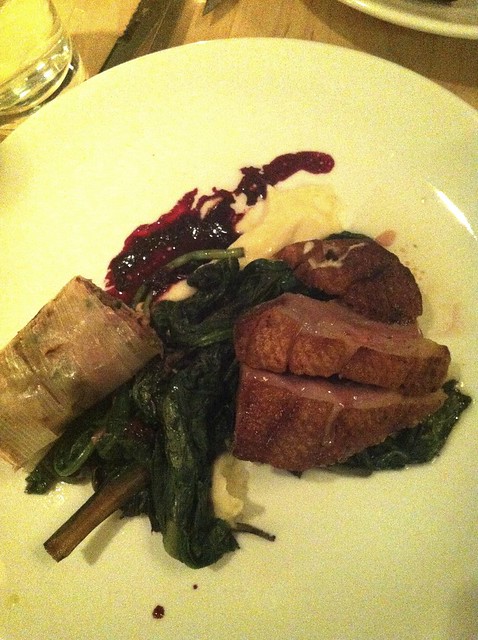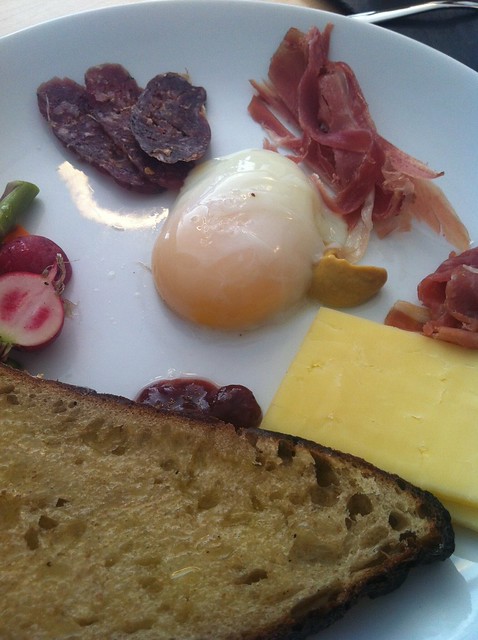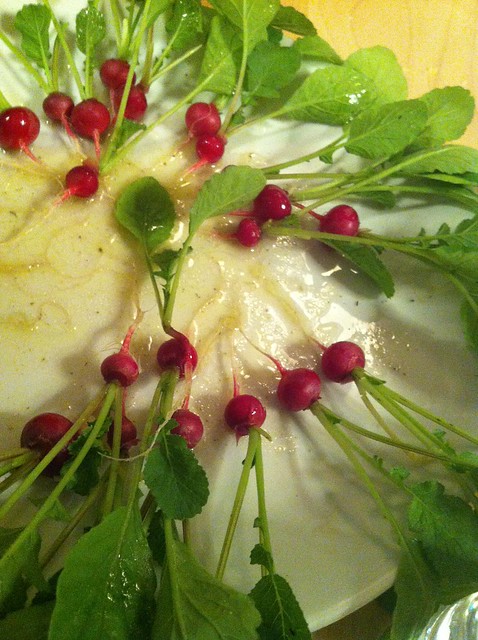109 A North 3rd Street between Berry and Wythe in Williamsburg, Brooklyn
$86 each for 3 people, with 3 drinks apiece, without tip
718/782.2602
♥ ♥ ♥
The disclaimer here is that I made a small investment on Parish Hall to finally fulfill one of my dreams of being a small part of the restaurant business. I also wanted to support George Weld, someone I’ve known since the dot-com days when we used to pretend we were actually working. But the fact of the matter is that I will still give this restaurant a good review even if I did not know George and even if I wasn’t a fan of his first venture, Egg.
If I can eat the duck breast everyday with a side of their “new field greens”, I’d be totally content. I’ve had the duck twice the last three times I visited (fourth if you count them hosting the Gastronauts’ 6th anniversary), and both times it was cooked impeccably. I was just bummed that I had to share it with my friends.

The salad’s composition depends on what greens they have in the kitchen that day, taking the concept of farm-to-table to a whole new level since George actually owns Goatfell Farm which provides most of their vegetables. They’ve had dandelion, arugula, mizuna, chickweed, watercress and all sorts of lettuces, and all of them tasted fresh, earthy and healthy. During one visit, nasturtium was on my plate; it was peppery and tasted so much like a… green–there’s really no other way to describe its rawness.
Equally delicious is the grilled rack of lamb and roasted shoulder and equally surprising to see on the plate was the flax and nettle pesto that came with it, not so much of a sauce but a dollop so you can lather as little or as much as you want. (But don’t worry, no stings included!) The homey dumpling also changes depending on what ingredients are on hand. I loved the version with asparagus, pears–and what again?–spinach cream and fennel pollen. A most recent addition was trout in a clean broth with some fiddleheads and the perfect cubes of apples. The dishes seem simple, but simple is never easy to implement in the kitchen. I think a chef’s skills are more challenged when he or she can make something so complicated look so simple to us mortals.
If you walk past the restaurant or go to their Web site, you’ll read a variety of the produce they present: beet, maple, apple-sorrel sauces, purée of parsnips, green garlic aioli, nettle yogurt, kohlrabi and sunchokes chips. I would like to think I’ve had my share of eating in some of America’s best restaurants, but nowhere else have I been perplexed about ingredients that are so straightforwardly named. Thomas Keller’s menus always come with quotation marks to describe their food, but with Parish Hall you get the list of ingredients and still have to ask the servers about them.
George has described their cooking as “the truth of the Northeast”–I suppose I didn’t know anything about what this part of the country can offer. Parish Hall and chef Evan Hanczor shows it can offer so much.
Some photos from my last few visits:
A simple Alpine breakfast named after the highest peak in the Catskills with a slow-cooked egg, some charcuterie, mustard and jam. I like the touch of fresh radishes on the plate to cut through the richness.

Water buffalo pastrami made especially for the Gastronauts’ 6th anniversary. You won’t see this on the regular menu though.

A plate of beautiful radishes:

Related post/s:
Parish Hall Web site
Goatfell Farm
George Weld on Fast Company‘s Co.Exist






